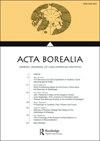Japan's Policies Towards the Ainu Language and Culture with Special Reference to North Fennoscandian Sami Policies
IF 0.6
4区 社会学
0 HUMANITIES, MULTIDISCIPLINARY
引用次数: 8
Abstract
Abstract Under Japan's colonization of Ainu Lands (Hokkaido, the Kuril Islands and Sakhalin), the Ainu were disconnected from their lands by relocations and deprived of their language and culture by regulations. In 1899, the Hokkaido Former Aborigines Protection Act came into force to finalize the assimilation of the Ainu into Japanese society. In 1997, as a result of Ainu efforts to scrap the assimilation policies, the Ainu Culture Promotion Act (CPA) replaced the Act of 1899. The CPA was expected to emancipate the Ainu from the sufferings caused by the assimilation policies, and yet it stipulated neither Ainu indigeneity nor their linguistic and cultural rights. It is still in effect even after the 2008 official recognition of the Ainu as an indigenous people in the northern part of Japan by the Government of Japan. This article attempts to examine Japan's past and present policies towards the Ainu language and culture in the international context for the revitalization of the Ainu language and culture as the Ainu desire. In order to do this, it first outlines the assimilation policies, and then traces the Ainu struggle for survival as a people. It also discusses the CPA and the Final Report written by the Advisory Committee for Future Ainu Policy, which both form the basis of Japan's present Ainu policies. Finally, in order to explore the revitalization of the Ainu language and culture, how the North Fennoscandian Sami policies have advanced is surveyed.日本对阿伊努人语言和文化的政策——以北芬诺斯坎德萨米人政策为例
在日本对阿伊努人领地(北海道、千岛群岛和库页岛)的殖民统治下,阿伊努人通过搬迁与自己的土地分离,并被法规剥夺了自己的语言和文化。1899年,《北海道前原住民保护法》生效,阿伊努人最终融入日本社会。1997年,由于阿伊努人努力废除同化政策,阿伊努文化促进法(CPA)取代了1899年的法案。人们期望《全面和平协议》将阿伊努人从同化政策所造成的苦难中解放出来,但它既没有规定阿伊努人的土著身份,也没有规定他们的语言和文化权利。即使在2008年日本政府正式承认阿伊努人是日本北部的土著民族之后,它仍然有效。本文试图在国际背景下审视日本过去和现在对阿伊努语言和文化的政策,以实现阿伊努人对阿伊努语言和文化的复兴。为了做到这一点,它首先概述了同化政策,然后追溯阿伊努人作为一个民族的生存斗争。它还讨论了《全面和平协议》和未来阿伊努政策咨询委员会编写的《最后报告》,这两者构成了日本目前阿伊努政策的基础。最后,为了探讨阿伊努语言和文化的复兴,考察了北芬诺斯坎德萨米人的政策是如何推进的。
本文章由计算机程序翻译,如有差异,请以英文原文为准。
求助全文
约1分钟内获得全文
求助全文

 求助内容:
求助内容: 应助结果提醒方式:
应助结果提醒方式:


